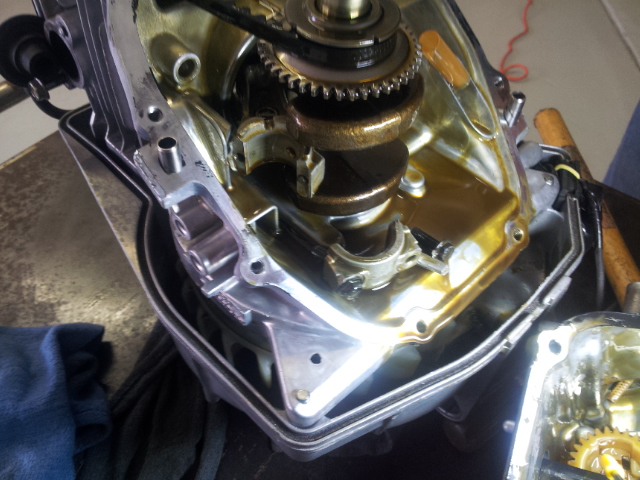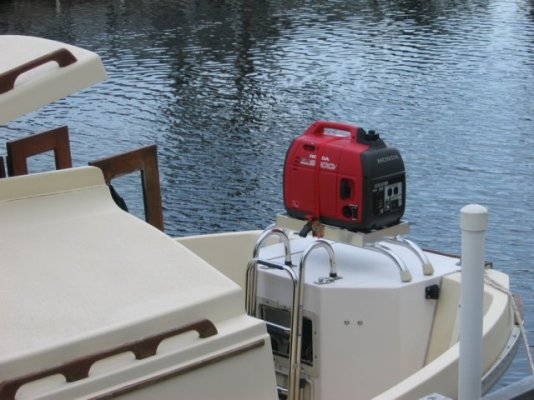- Joined
- Apr 15, 2008
- Messages
- 13,731
- Location
- California Delta
- Vessel Name
- FlyWright
- Vessel Make
- 1977 Marshall Californian 34 LRC
I have a Honda eu2000i generator that I've used on my boat for the past several years. In 214 hrs of operation, it has always performed flawlessly. Last time I was out fishing, it ran fine on day one, then when I started it on day 2, it ran for 5 seconds after start with a pronounced slapping noise before falling dead silent.
I brought it to a friend's shop since he has experience in small engine repair and the equipment to do it right. Upon opening the case, we immediately found the culprit. A bolt on the connecting rod end sheared, causing the second bolt to bend and the rod end separated from the crankshaft. There was no damage to the case, crank, timing belt, piston or cylinder.
Here's a shot of the connecting rod end sitting in the case. The bolt on the right is the one that sheared, it's other half still in the connecting rod. The bolt on the left had about a 30 degree bend in it.

I found a local small engine repair shop that could get us the connecting rod in town the next day for $56, so we placed the order. After a few speed bumps like a sheared exhaust manifold bolt (bolt drilled out and replaced, hole retapped) and a sheared woodruff key (replaced), the engine was rebuilt and started right up. I'm running it at home now to reseat the rings and then check for leaks.
I learned a lot about the proper reassembly of 4-stroke engines from my buddy. Having a Honda maintenance manual was invaluable. I can't imagine ever doing it right without that information at our fingertips. The toughest part of the job was figuring out and reassembling all the engine shrouds, covers and trim pieces.
Now I'm keeping my fingers crossed that this time it lasts much longer than 200 hrs.
I brought it to a friend's shop since he has experience in small engine repair and the equipment to do it right. Upon opening the case, we immediately found the culprit. A bolt on the connecting rod end sheared, causing the second bolt to bend and the rod end separated from the crankshaft. There was no damage to the case, crank, timing belt, piston or cylinder.
Here's a shot of the connecting rod end sitting in the case. The bolt on the right is the one that sheared, it's other half still in the connecting rod. The bolt on the left had about a 30 degree bend in it.

I found a local small engine repair shop that could get us the connecting rod in town the next day for $56, so we placed the order. After a few speed bumps like a sheared exhaust manifold bolt (bolt drilled out and replaced, hole retapped) and a sheared woodruff key (replaced), the engine was rebuilt and started right up. I'm running it at home now to reseat the rings and then check for leaks.
I learned a lot about the proper reassembly of 4-stroke engines from my buddy. Having a Honda maintenance manual was invaluable. I can't imagine ever doing it right without that information at our fingertips. The toughest part of the job was figuring out and reassembling all the engine shrouds, covers and trim pieces.
Now I'm keeping my fingers crossed that this time it lasts much longer than 200 hrs.


